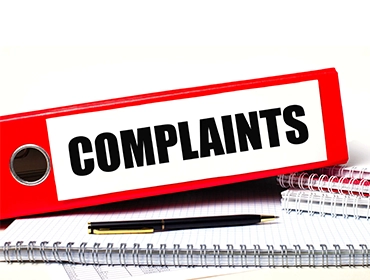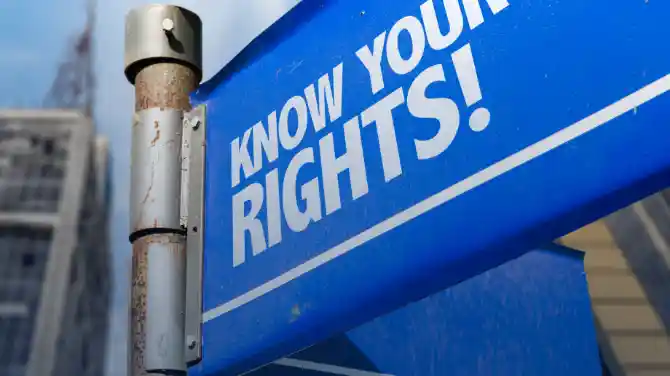 IST,
IST,


About
Consumer education and protection is an integral component of RBI’s full-service central banking functions. The Consumer Education and Protection Department (CEPD), set up in 2006 as Customer Service Department (CSD), frames policy guidelines for consumer protection and oversees the functioning of the 24 Offices of RBI Ombudsman (ORBIOs) and 32 Consumer Education and Protection Cells (CEPCs). The major functions of CEPD include: (i) Administering the Reserve Bank – Integrated Ombudsman Scheme (RB-IOS), 2021, which was formulated by integrating the erstwhile Ombudsman Schemes for banks, Non-Banking Financial Companies (NBFCs) and Non-bank System Participants (NBSPs); (ii) Handling complaints regarding deficiencies in customer service in banks, received in RBI through the Centralized Public Grievance Redress and Monitoring System (CPGRAMS) portal of Government of India (GoI); (iii) Serving as the Secretariat to the Appellate Authority (AA) under the RB-IOS, 2021; (iv) Overseeing the grievance redress mechanism in respect of services rendered by various offices/departments of RBI; (v) Liaising with banks, Indian Banks’ Association, ORBIOs and the regulatory departments of RBI on matters relating to customer service and grievance redress, and providing policy inputs; (vi) Creating consumer awareness and disseminating information relating to customer service and grievance redress by banks and RBI; and (vii) Compiling and publishing the Annual Report of the RB-IOS.
The Reserve Bank’s focused initiatives in the field of consumer protection began with the (i) setting up of Complaints Redressal Cell in 1995, (ii) instituting an Alternative Grievance Redress (AGR) mechanism through launch of Banking Ombudsman (BO) Scheme in 1995-96, and (iii) creation of a full-fledged CSD from the erstwhile Rural Planning and Credit Department. CSD was rechristened as CEPD in 2014.
The BO Scheme was launched in 1995 as an AGR mechanism with a view, inter-alia, to bring redress of customer grievances against banks, which till then rested with the respective regulatory and supervisory departments, under a single platform. AGR mechanism offers the parties in a dispute, an alternative channel to redress their disputes, without approaching regular courts. Initially, retired judges/ bureaucrats/ senior bank officials were appointed as BOs and the Scheme was funded by the banks, with manpower drawn from State Level Bankers’ Committee’s convener banks and RBI. The Scheme was amended in 2006 when RBI took over the staffing, funding, and appointment of the Ombudsmen, inter-alia, to increase accountability and reduce the level of pendency in disposal of complaints. Over the years, many changes were brought in the BO Scheme including the appeal mechanism and higher monetary limit for compensation to complainants. The erstwhile BO Scheme had specified grounds of complaints (31) and the BOs who operated from 22 different offices had specified and mutually exclusive jurisdictions.
Due to the growing significance of the NBFCs in the financial system and with a view to extend AGR to their customers as well, the Ombudsman Scheme for the NBFCs was launched in 2018 and was operated from four metro centers with each covering their respective zone. Similarly, with the rising share of NBSPs in digital transactions, the Ombudsman Scheme for Digital Transactions (OSDT) was launched in 2019 with the BOs acting as Ombudsmen under the OSDT.
The three schemes, having evolved over different periods of time, had specified grounds of complaints which were not only different under each Scheme but also acted as a limiting factor and led to uneven redress across the customers of different entities. As such, a need was felt to integrate the three Ombudsman Schemes into one, simplify the scheme by covering all complaints involving deficiency in service, and centralise the receipt and initial processing of complaints at Centralised Receipt and Processing Center (CRPC) set up at RBI, Chandigarh to impart process efficiency, along with a Contact Center available at #14448 to provide information on grievance redress mechanism of RBI to complainants. Delegation was introduced, and a post of Deputy Ombudsman was also created in each Ombudsman Office to ensure expeditious redress of certain categories of complaints. The exclusive jurisdiction of each Ombudsman Office was also done away with under the concept of ‘One Nation - One Ombudsman’. Accordingly, the Reserve Bank – Integrated Ombudsman Scheme (RB-IOS) along with the CRPC and Contact Center was launched on November 12, 2021 by the Hon’ble Prime Minister.
Key Topics

Grievance Redress at RBI
Reserve Bank - Integrated Ombudsman Scheme, 2021, resolves customer grievances in relation to services provided by entities regulated by RBI

Grievance Redress at Regulated Entities
RBI has formulated a Charter of Customer Rights for banks, Internal Ombudsman Schemes for the Regulated Entities (REs) of RBI

Consumer Protection
RBI had set up the Committee for Review of Customer Service Standards in RBI regulated entities

Consumer Education & Awareness
Creates consumer awareness and disseminate information relating to customer service and grievance redress by the regulated entities of RBI
Some recent initiatives of the Reserve Bank in consumer education and protection are:
- Charter of Customer Rights - The RBI has formulated a "Charter of Customer Rights" for banks based on global best practices in consumer protection. The Charter enshrines broad, overarching principles for protection of bank customers and enunciates the following five basic rights of bank customers:
1. Right to Fair Treatment
2. Right to Transparency, Fair and Honest Dealing
3. Right to Suitability
4. Right to Privacy
5. Right to Grievances Redress and Compensation - Banks are required to prepare their own Board approved policy, incorporating the five rights of the Charter, or suitably integrate their existing Customer Service Policy with the “Model Customer Rights Policy” formulated by IBA/BCSBI.
- Internal Ombudsman Scheme- RBI, with effect from September 03, 2018, had directed all Scheduled Commercial Banks (excluding Regional Rural Banks) with 10 or more banking outlets to appoint an Internal Ombudsman (IO) at the apex of their grievance redress mechanism for an independent review of customer complaints that are rejected partly/ wholly by their internal grievance redress mechanism. The IO Scheme was extended to Non-Bank System Participants (issuers of Pre-Paid Payment Instruments - PPIs with more than one crore outstanding PPIs as on March 31 of the previous year) on October 22, 2019 . The IO Scheme for Non-Banking Financial Companies (NBFCs) was launched on November 15, 2021, for all Deposit-taking NBFCs (NBFCs-D) with 10 or more branches and Non-Deposit taking NBFCs (NBFCs-ND) with asset size of Rs.5,000 crore and above having customer interface. The Scheme was further extended to all Credit Information Companies on October 06, 2022.
During 2023-24, a review of Internal Ombudsman schemes was undertaken and the Master Direction - Reserve Bank of India (Internal Ombudsman for Regulated Entities) Direction on December 29, 2023, which repealed all the earlier instructions on Internal Ombudsman, was issued to harmonize the instructions applicable to the various Regulated Entities. The framework reaffirms that the Internal Ombudsman mechanism should work as envisaged and the Internal Ombudsman shall be positioned as an independent, apex level authority on consumer grievance redress within the regulated entities. - Complaints Management System - RBI launched the CMS on June 24, 2019, a state-of-the-art web-based application integrating all stakeholders, i.e. customers, officials at Offices of the RBI Ombudsman, CEPCs, CEPD and Regulated Entities, on one platform for enabling end-to-end complaint processing through digital mode. CMS provides real time status of complaints and also hosts comprehensive material on e-learning based consumer education to enhance awareness on financial services and consumer rights.
- Strengthening of grievance redress mechanism in banks - A comprehensive framework for strengthening of the internal grievance redress mechanism in banks was put in place in January 2021 comprising of the following aspects: (a) Enhanced disclosures on complaints (b) Recovery of cost of redress of maintainable complaints received against the banks in excess of their peer-group averages based on certain parameters, and (c) Intensive review of grievance redress mechanism of banks and (d) initiation of required supervisory and regulatory actions.
- Other steps recently initiated for customer protection are:
- Conduct of Root Cause Analysis based on complaints received at RBI to initiate the required remedial measures
- Nationwide Intensive Awareness Program held across the country
- Establishment of Contact Centers (#14448) to provide information related to AGR mechanism
- Inclusion of safe banking practices in educational curriculum
- Formulating appropriate regulations pertaining to grievance redressal and grievance redress mechanisms.
- Improving the Internal Grievances Redress Mechanism of Regulated Entities for effectiveness and timely response
- Harnessing advanced technological tools for strengthening customer protection and improving expediency of grievance redressal by RBI
- Enhanced awareness for protecting customers from financial frauds
Legal Framework
पेज अंतिम अपडेट तारीख:












